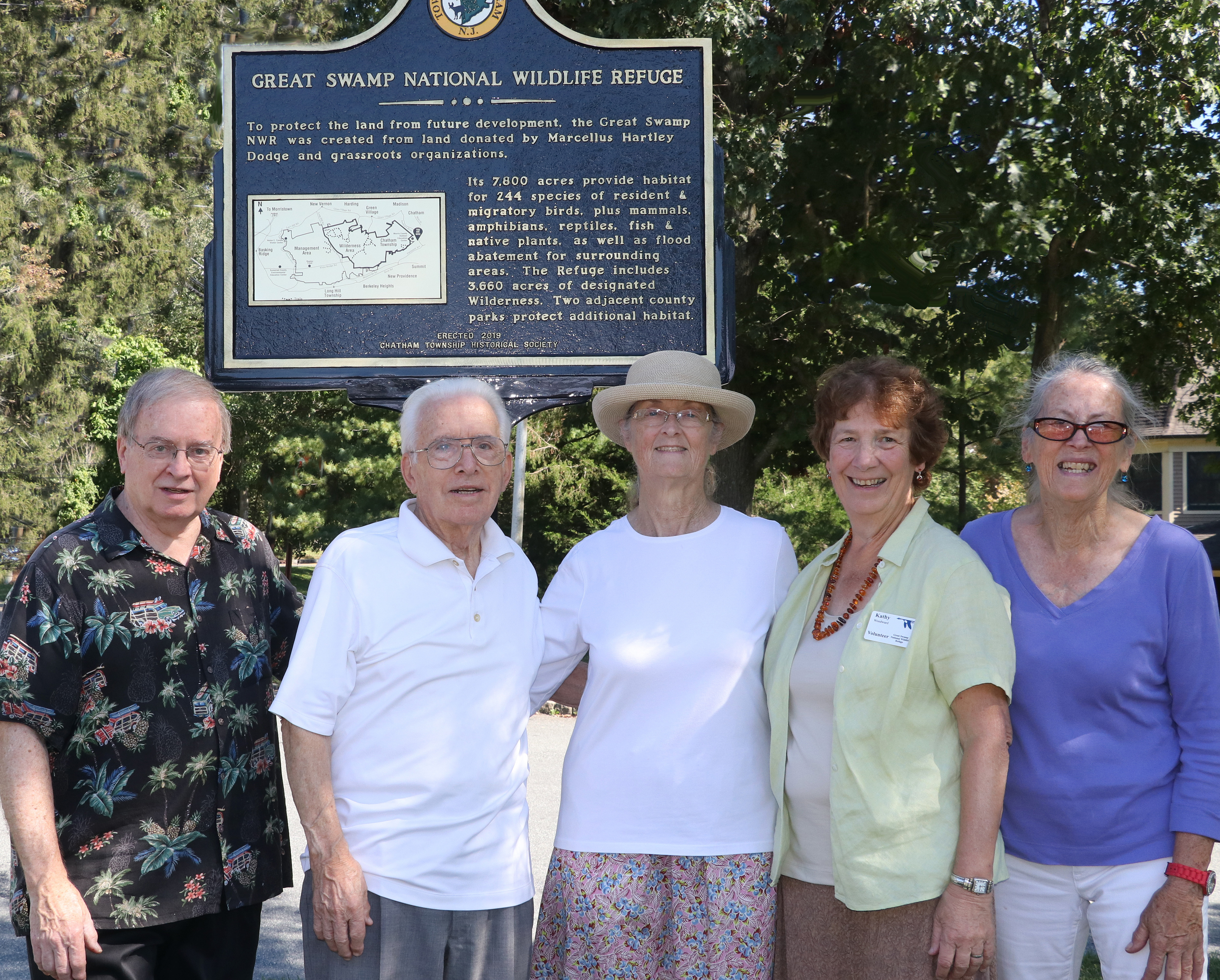
(above) The GSNWR Marker Committee L-R Historical Society Trustees Tom Salvas, Bert Abbazia and Pat Wells, Friends of Great Swamp NWR, Board Member Kathy Woodward and Historical Society President, Martha Wells.
The Great Swamp Receives Historic Marker
Submitted by Tom Salvas and the Chatham Township Historical Society
The Chatham Township Historical Society recently unveiled the latest addition to its Historic Marker collection. The Great Swamp National Wildlife Refuge marker is at the corner of Southern Boulevard and Hampton Road, which is at the eastern edge of the 7,800 acre refuge.
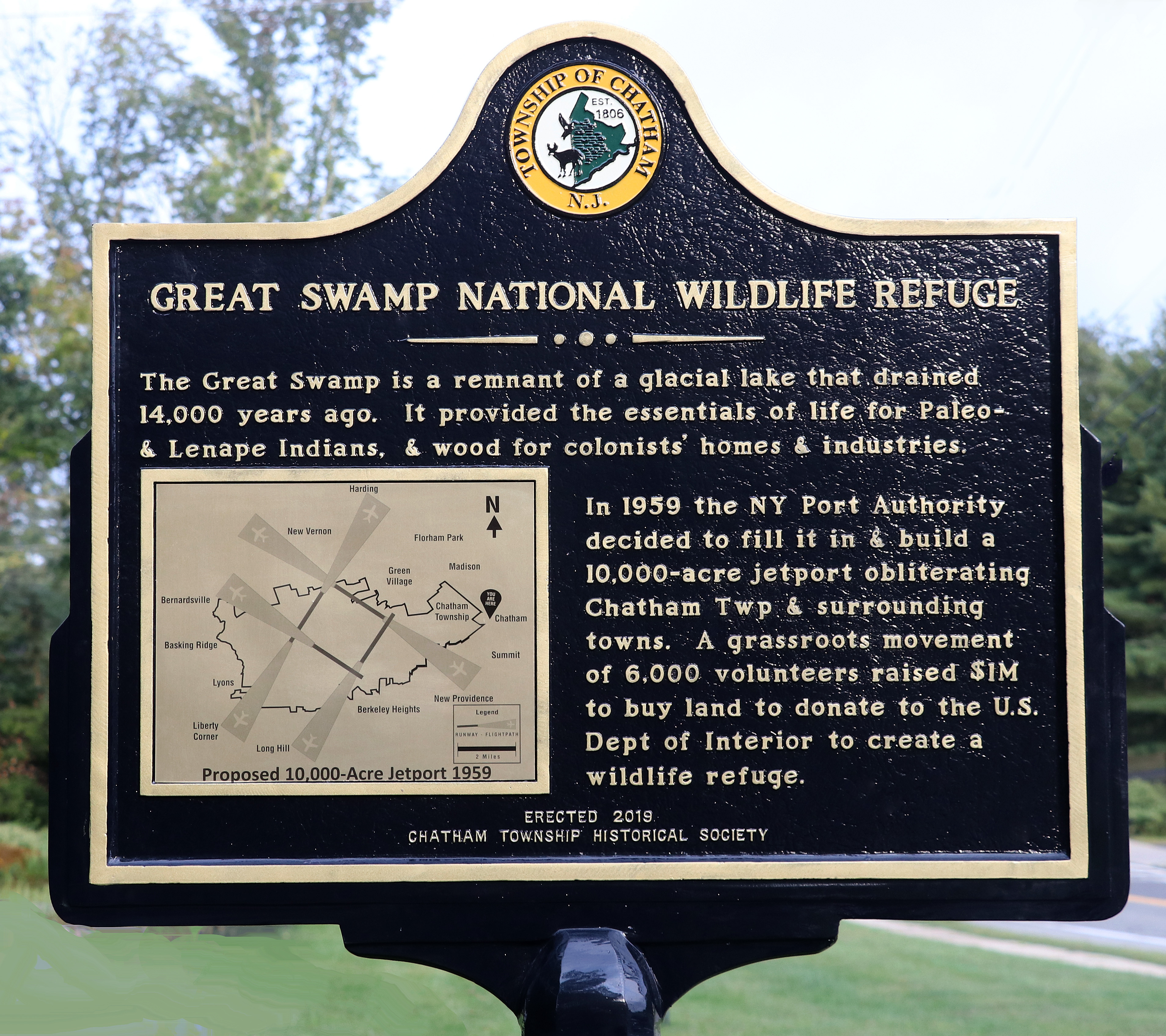
(above) Two historic markers were placed at the Great Swamp National Wildlife Refuge at the corner of Southern Boulevard and Hampton Road.
The marker recognizes the grassroots efforts sixty years ago to prevent the Port Authority of NY and NJ from constructing a 10,000-acre jetport that would have obliterated Chatham Township and surrounding towns.
Two maps are included on the marker. One is a graphic of the proposed jetport runways and the other is a map of the refuge showing the surrounding towns.
Lia McLaughlin, Deputy Refuge Manager, commented in a letter to the Historical Society, “On behalf of the U.S. Fish and Wildlife Service Great Swamp National Wildlife Refuge, thank you for honoring the refuge with a Historic Marker recognizing the importance of the refuge and commemorating the inspiring effort that went into saving this special place. There would not be a Great Swamp National Wildlife Refuge if not for the support and dedication of Chatham Township, the other surrounding communities, and their citizens.”
The marker was designed by the project committee of Tom Salvas, Bert Abbazia, Martha Wells, Pat Wells, Kathy Woodward and other Society members, with graphics assistance from Sue Kessel of Chatham Print & Design. Sewah Studios of Marietta, Ohio produced the marker.
Pat Wells, Vice President of the Chatham Township Historical Society, writes of the history of The Great Swamp: Wilderness in Suburbia.
The formation of the Great Swamp began 15,000 years ago with the arrival of the Wisconsin Glacier. As the glacier receded 4000 years later, the melt water filled the basin between the Second Watchung Mountain and the ridge of mountains west of Morristown. Long Hill reached above the surface as an island in the 10 by 30-mile lake. The water finally broke through a plug of glacial moraine and drained at Paterson Great Falls.
Around this time the paleo-Indians arrived. The Great Swamp supplied all their food, water and building materials. The tribe of Indians who inhabited Northern New Jersey when colonists arrived were the Lenapes. Archeological evidence of the paleo-Indian and Lenape camps has been found throughout the Great Swamp including thousands of stone implements. Examples can be seen in the Red Brick Schoolhouse Museum, 24 Southern Boulevard, Chatham Township.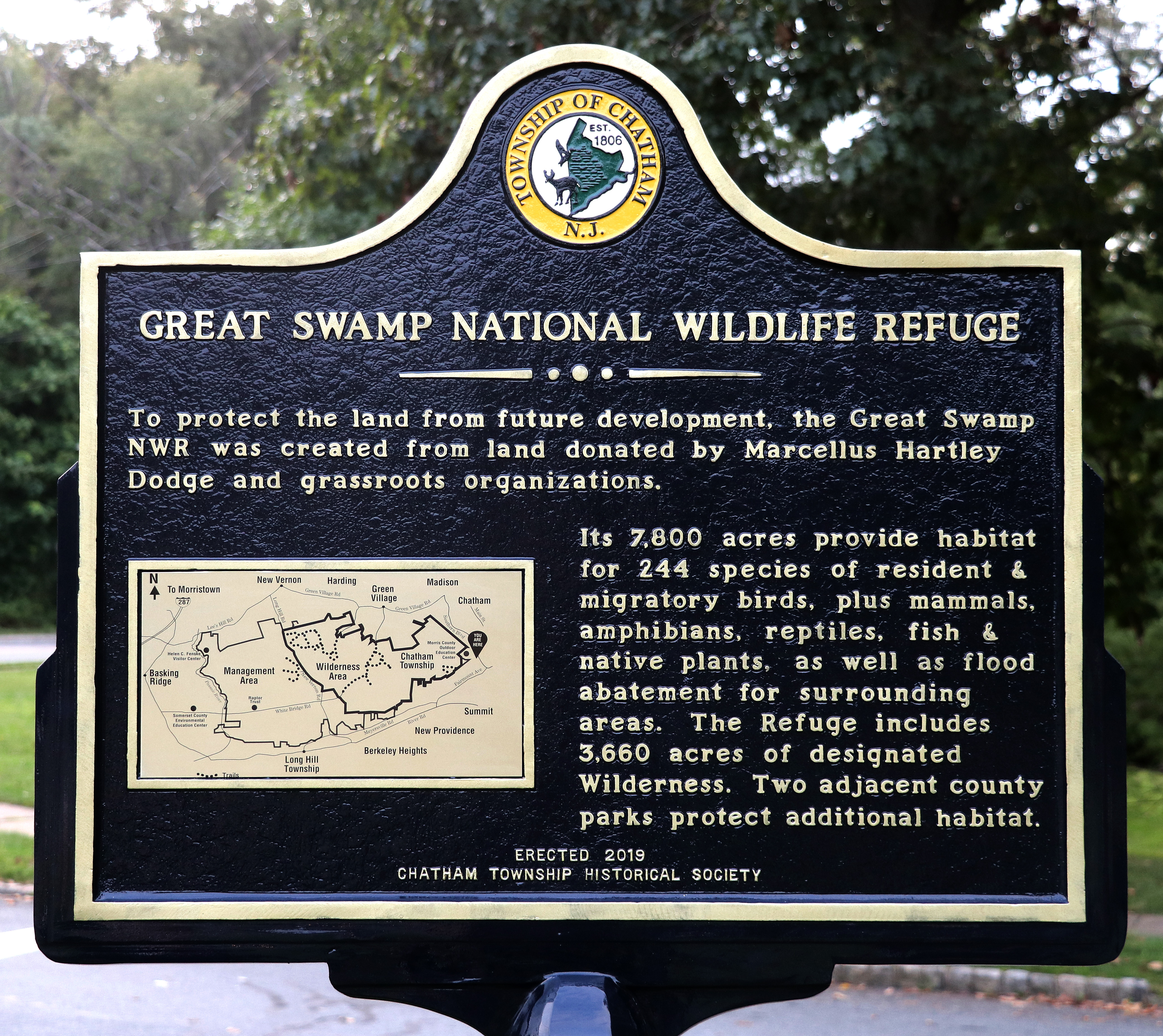
The earliest colonists were attracted to its woodlands as a supply for charcoal for the local iron forges. When colonial farmers settled the land, the swamp became an important source of wood for cooking and heating homes. Later, a grid of woodlots was laid out in the area between Green Village Road and Southern Blvd. Homeowners would purchase a woodlot to supply their home with fire wood. When coal became the preferred heating fuel, the woodlots were cleared and used as farm land.
During the 1800s much of the swamp was slowly stripped of its trees. A lumber mill in Green Village processed large trees for building materials and railroad ties. A peach basket factory on the second floor used smaller trees to make hundreds of baskets a day which were used locally or shipped to market by railroad.
By the 1900s, most of the land had also been cleared for farming. Dikes and ditches controlled the water level. Meadow hay was grown for winter forage for cows and horses. Hundreds of acres of swampland were purchased by Louis M. Noe and Oscar Brant who leased it to tenant farmers to grow peaches. By the turn of the century a person could see for miles across the swamp.After World War I, farming declined within the swamp. The dikes and ditches were not maintained, so the water levels rose, and the woodlands gradually returned.
In 1959 the Port Authority of NY and NJ proposed filling in the swamp and using the area for a new jetport. Thousands of citizens protested and provided the money to purchase nearly 3000 acres of the Great Swamp. Marcellus Hartley Dodge of Harding Township secretly made the first large purchases helping to assure the project’s success. The land was donated to the U.S. Department of the Interior to protect it from development.
The film “Saving the Great Swamp: Battle to Defeat the Jetport” produced by local residents Scott Morris and Larry Fast, recounts this story. It can be purchased at the Helen Fenske Visitors Center at Great Swamp National Wildlife Refuge, 241 Pleasant Plains Rd, Basking Ridge or through the website:https://www.savingthegreatswamp.com/
Today the Great Swamp provides habitat for 244 species of birds, 39 species of mammals, including the endangered Indiana bat, and at least 42 species of amphibians and reptiles, including the endangered bog turtle. Insects abound, including many species of dragonflies, butterflies, bees, and other pollinators.
In 1968, 3,660 acres in the eastern portion of the Great Swamp Nation Wildlife Refuge were designated as wilderness and the road connecting Green Village to Meyersville was removed as no motorized vehicles or equipment can be used in a Wilderness Area. The old road is now a hiking trail. Other hiking trails can be found in the Wilderness Area, at the Wildlife Observation Area, and at the Helen C. Fenske Visitors Center. There are also trails at the Morris County Outdoor Education Center, 247 Southern Blvd, Chatham, and the Somerset County Environmental Education Center, 190 Lord Stirling Road, Basking Ridge.
Photos by Tom Salvas
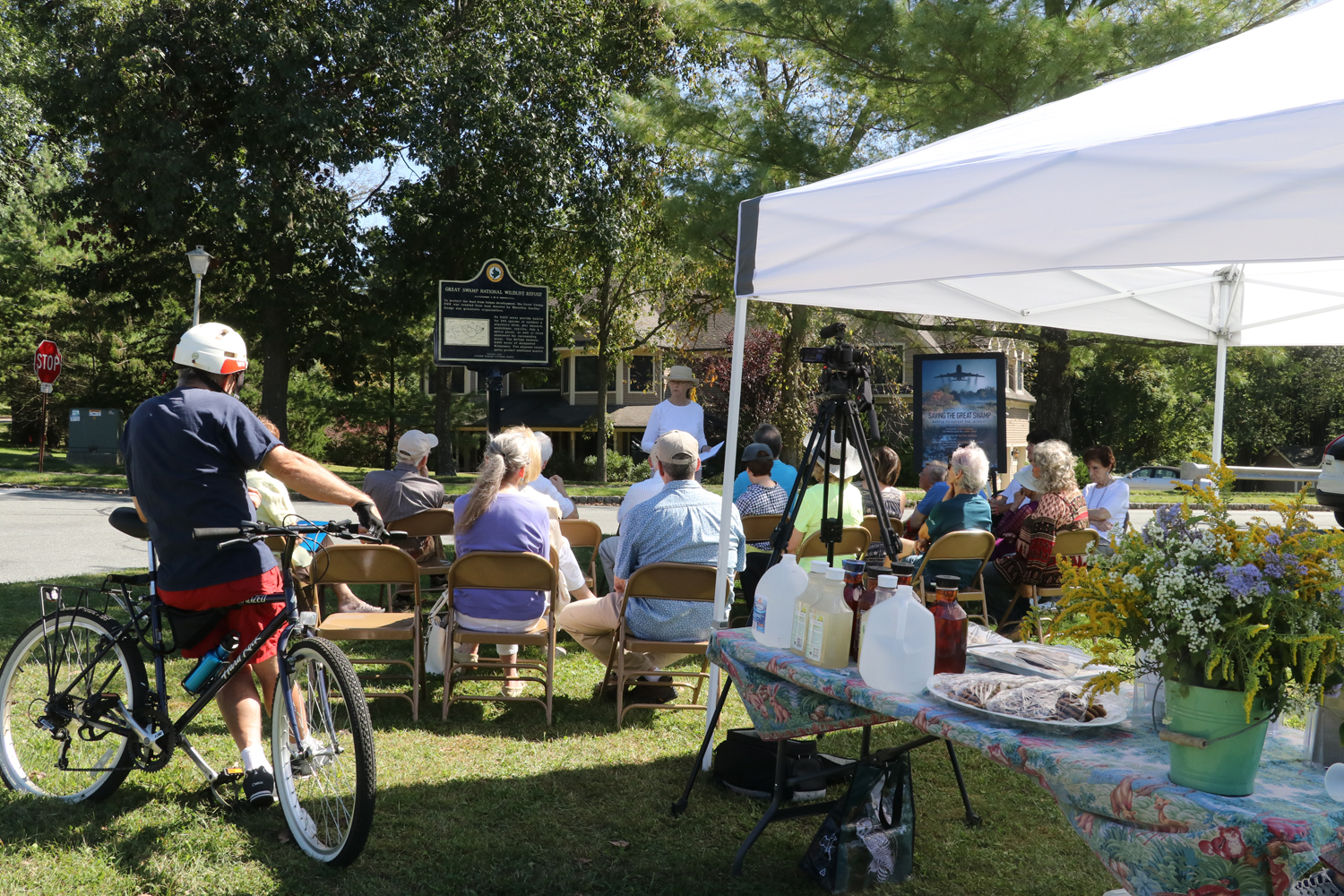
(above) Residents gather at the Marker location on the corner of Southern Blvd. and Hampton Road.
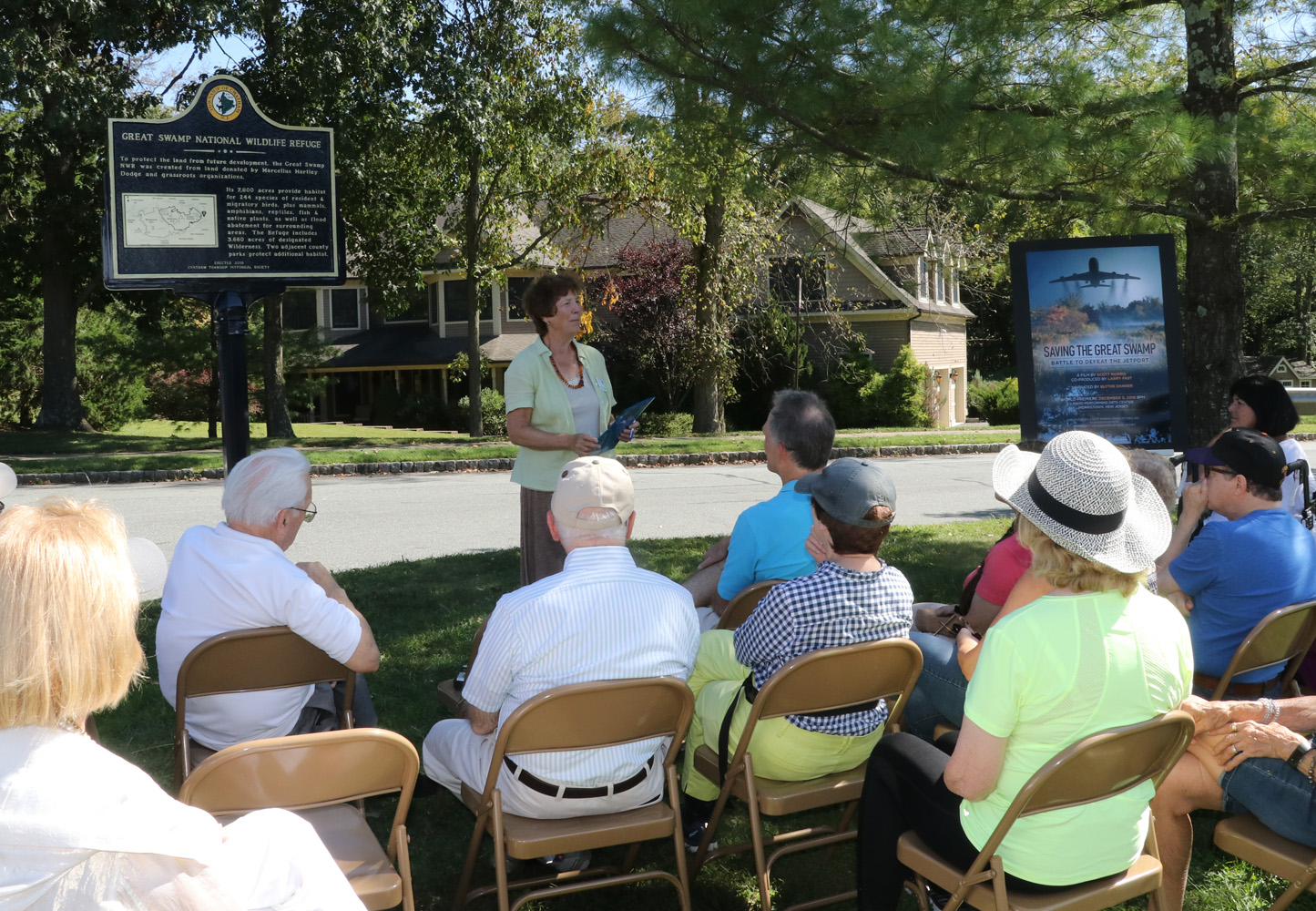
(above) Kathy Woodward talks about the Friends of Great Swamp and the Helen C. Fenske Visitor Center.
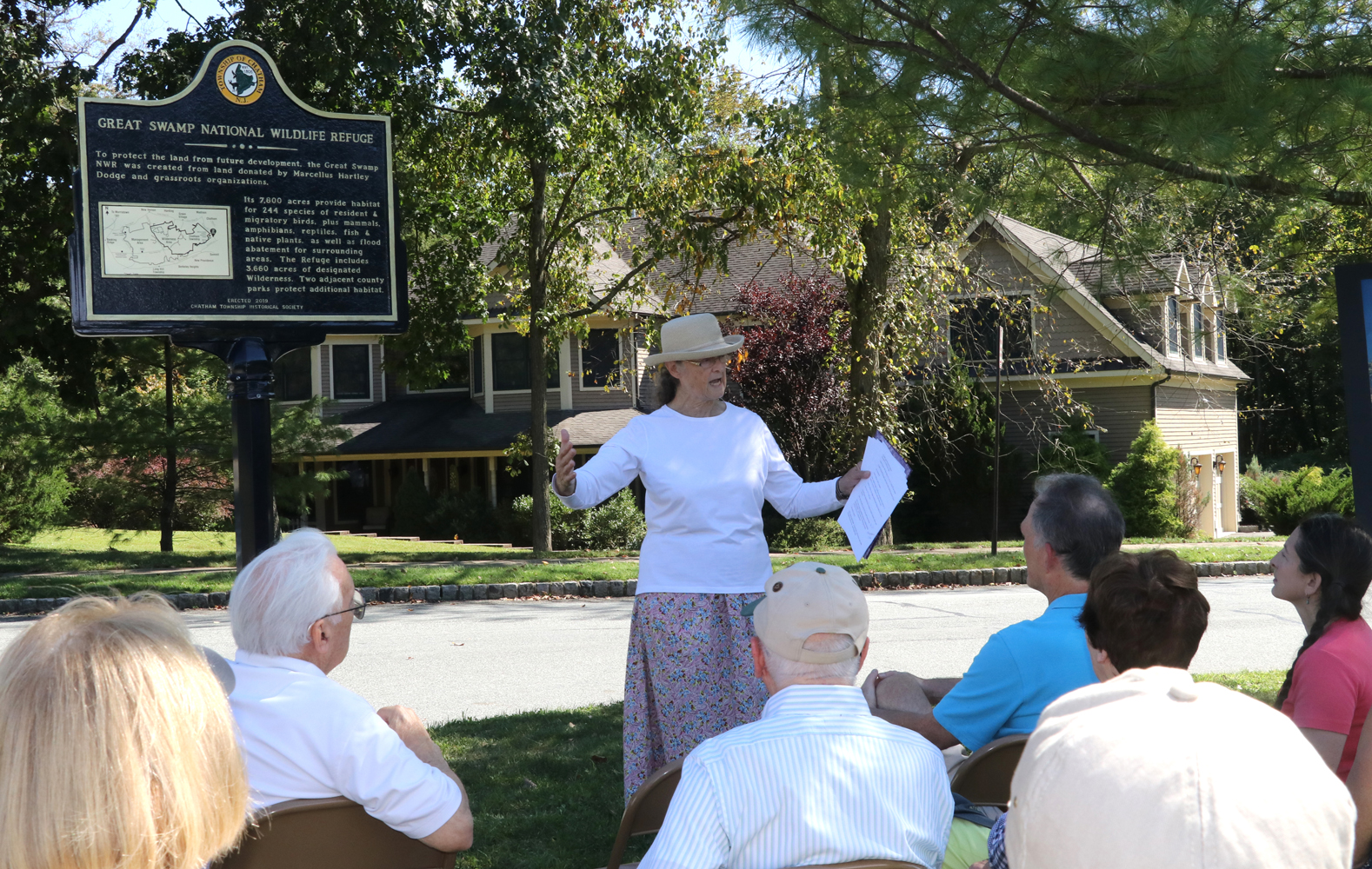
(above) Pat Wells, Historical Society Vice President, shares the history of the Great Swamp.
